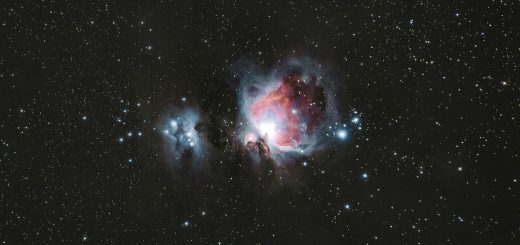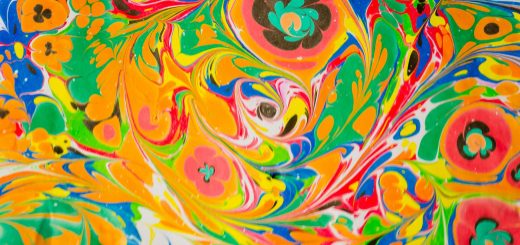Deep Relaxation: Journey to Inner Peace & Harmony

Before diving in, please note: This post is for informational purposes only. If you’d like to know more about how we approach topics, feel free to check out our friendly Disclaimer Page.
Hey there, amazing readers! 🖐️ Just a quick note: yes, we know there are a lot of ads here. Trust us, we get it—it’s not the prettiest look, but they help us keep this blog alive and kicking. Those pesky little ads cover the costs of all the behind-the-scenes magic, from hosting and tech stuff to creating content we hope you’ll love.
We’re committed to delivering quality posts, and your support (even just sticking around despite the ads) means everything to us. So, bear with us, and thanks for helping us keep the good vibes rolling. Now, on to the fun stuff! 😉
TRANSLATE BUTTON AT THE END OF THE ARTICLE
A Quick Overview
In today’s fast-paced world, finding moments of deep relaxation is essential for our mental, emotional, and physical well-being.
Deep relaxation allows us to release stress, unwind, and rejuvenate our mind and body.
It is a journey to inner peace and harmony, where we can cultivate a sense of calmness, balance, and tranquility amidst the chaos of daily life.
Through various relaxation techniques, we can tap into our inner resources and access a state of deep calm that promotes overall health and vitality.
The Importance of Deep Relaxation
Deep relaxation is crucial for our overall health and well-being.
When we are constantly in a state of stress, our bodies release cortisol, the stress hormone, which can have harmful effects on our immune system, cardiovascular health, and mental state.
By engaging in deep relaxation practices, we can counteract the negative effects of stress and promote a sense of balance and harmony within ourselves.
Deep relaxation allows our bodies to rest and repair, leading to improved sleep quality, reduced anxiety, and enhanced cognitive function.
Understanding Inner Peace
Inner peace is a state of being where we feel calm, centered, and at ease with ourselves and the world around us.
It is a sense of harmony that comes from within, regardless of external circumstances.
Deep relaxation is a powerful tool for cultivating inner peace, as it helps us quiet the mind, release tension from the body, and connect with our inner selves.
By accessing a state of deep relaxation, we can tap into our inner wisdom, intuition, and resilience, allowing us to navigate life’s challenges with grace and ease.
Benefits of Regular Relaxation
Engaging in regular relaxation practices offers a multitude of benefits for our physical, mental, and emotional well-being.
Some of the key benefits of regular relaxation include:
– Reduced stress and anxiety
– Improved sleep quality
– Enhanced mood and emotional well-being
– Lowered blood pressure
– Boosted immune system
– Increased focus and concentration
– Enhanced creativity and problem-solving skills
– Improved relationships and communication
– Greater self-awareness and self-compassion
– Overall sense of well-being and vitality
Techniques for Deep Relaxation
There are various techniques that can help us achieve deep relaxation and inner peace.
Some popular techniques include deep breathing exercises, visualization, progressive muscle relaxation, and mindfulness meditation.
These techniques can be practiced individually or in combination to create a personalized relaxation routine that suits our needs and preferences.
By exploring different relaxation techniques, we can find the ones that resonate with us and incorporate them into our daily lives to promote a sense of calm and balance.
Creating a Relaxation Routine
Creating a relaxation routine is essential for making deep relaxation a regular part of our lives.
To create a relaxation routine, consider the following steps:
Set aside time for relaxation: Schedule regular time in your day for relaxation, whether it’s in the morning, during lunch break, or before bedtime.
Create a relaxing environment: Find a quiet and peaceful space where you can unwind and relax without distractions.
Choose your relaxation techniques: Select the relaxation techniques that work best for you, such as deep breathing, visualization, or mindfulness meditation.
Practice consistency: Make relaxation a daily habit by committing to your relaxation routine and prioritizing self-care.
Listen to your body: Pay attention to how your body responds to different relaxation techniques and adjust your routine accordingly to meet your needs.
Deep Breathing Exercises
Deep breathing exercises are a simple yet powerful way to promote relaxation and reduce stress.
By focusing on slow, deep breaths, we can activate the body’s relaxation response, calming the nervous system and promoting a sense of peace and well-being.
To practice deep breathing, follow these steps:
Find a comfortable position: Sit or lie down in a comfortable position, with your shoulders relaxed and your eyes closed.
Inhale deeply: Breathe in slowly and deeply through your nose, expanding your belly as you inhale.
Exhale slowly: Breathe out slowly and completely through your mouth, letting go of any tension or stress.
Repeat: Continue to inhale and exhale deeply, focusing on the rhythm of your breath and allowing yourself to relax with each breath.
Visualization for Inner Harmony
Visualization is a powerful technique for promoting inner harmony and peace.
By imagining calming and peaceful scenes in your mind, you can create a sense of relaxation and tranquility within yourself.
To practice visualization, follow these steps:
Choose a peaceful scene: Close your eyes and visualize a serene and peaceful place, such as a beach, forest, or mountain.
Engage your senses: Imagine the sights, sounds, smells, and sensations of your chosen scene, immersing yourself fully in the experience.
Focus on relaxation: Allow yourself to relax and unwind in this imagined space, letting go of any tension or stress.
Stay present: Stay present in the moment and enjoy the feelings of peace and harmony that visualization brings.
Progressive Muscle Relaxation
Progressive muscle relaxation is a technique that involves tensing and then relaxing different muscle groups in the body to promote deep relaxation.
By systematically tensing and releasing muscle groups, we can release physical tension and calm the mind.
To practice progressive muscle relaxation, follow these steps:
Start at your toes: Begin by tensing the muscles in your toes for a few seconds, then release and relax them completely.
Work your way up the body: Continue to tense and relax muscle groups, moving up from your feet to your legs, abdomen, chest, arms, and finally, your face.
Focus on the sensations: Pay attention to the sensations of tension and relaxation in each muscle group, allowing yourself to release any built-up tension.
Enjoy the relaxation: Once you have tensed and relaxed all muscle groups, enjoy the deep sense of relaxation and calmness that follows.
Mindfulness Meditation
Mindfulness meditation is a practice that involves being fully present in the moment, observing your thoughts and feelings without judgment.
By cultivating mindfulness, we can develop a sense of inner peace, clarity, and self-awareness.
To practice mindfulness meditation, follow these steps:
Find a quiet space: Sit comfortably in a quiet space, with your eyes closed and your back straight.
Focus on your breath: Bring your attention to your breath, noticing the sensation of each inhale and exhale.
Observe your thoughts: Allow thoughts to come and go without attaching to them, simply observing them with curiosity.
Return to the breath: Whenever you become distracted by thoughts, gently bring your focus back to your breath, anchoring yourself in the present moment.
Achieving Mental Clarity
Deep relaxation can help us achieve mental clarity by clearing the mind of clutter, reducing stress, and enhancing focus and concentration.
When we are in a state of deep relaxation, our minds are more receptive to new ideas, insights, and solutions.
By practicing relaxation techniques regularly, we can cultivate mental clarity and sharpness, allowing us to approach challenges with a clear and calm mind.
Connecting with Inner Self
Deep relaxation provides an opportunity to connect with our inner selves, accessing our intuition, wisdom, and inner guidance.
By quieting the mind and tuning into our inner world, we can gain a deeper understanding of ourselves, our values, and our purpose.
Through deep relaxation practices, we can nurture a strong connection with our inner self, leading to greater self-awareness, self-compassion, and authenticity.
Incorporating Relaxation in Daily Life
To reap the full benefits of deep relaxation, it is important to incorporate relaxation practices into our daily lives.
By making relaxation a priority, we can cultivate a sense of calm and balance that permeates all aspects of our lives.
Some ways to incorporate relaxation in daily life include:
– Schedule regular relaxation breaks throughout the day
– Practice deep breathing exercises before bed
– Take short mindfulness meditation breaks during work
– Engage in progressive muscle relaxation before sleep
– Spend time in nature to relax and unwind
– Listen to calming music or sounds during moments of stress
– Prioritize self-care activities that promote relaxation and well-being
Conclusion
Deep relaxation is a powerful tool for promoting inner peace, harmony, and well-being.
By engaging in regular relaxation practices such as deep breathing, visualization, progressive muscle relaxation, and mindfulness meditation, we can cultivate a sense of calm and balance in our lives.
Through deep relaxation, we can reduce stress, enhance focus and concentration, and connect with our inner selves, leading to greater self-awareness and authenticity.
By incorporating relaxation into our daily routines, we can nurture a sense of calm and vitality that supports our overall health and well-being.

The Enlightenment Journey is a remarkable collection of writings authored by a distinguished group of experts in the fields of spirituality, new age, and esoteric knowledge.
This anthology features a diverse assembly of well-experienced authors who bring their profound insights and credible perspectives to the forefront.
Each contributor possesses a wealth of knowledge and wisdom, making them authorities in their respective domains.
Together, they offer readers a transformative journey into the realms of spiritual growth, self-discovery, and esoteric enlightenment.
The Enlightenment Journey is a testament to the collective expertise of these luminaries, providing readers with a rich tapestry of ideas and information to illuminate their spiritual path.
Our Diverse Expertise 🌟
While our primary focus is on spirituality and esotericism, we are equally passionate about exploring a wide range of other topics and niches 🌍📚. Our experienced team is dedicated to delivering high-quality, informative content across various subjects ✨.
To ensure we provide the most accurate and valuable insights, we collaborate with trusted experts in their respective domains 🧑🏫👩🏫. This allows us to offer well-rounded perspectives and knowledge to our readers.
Our blog originally focused on spirituality and metaphysics, but we’ve since expanded to cover a wide range of niches. Don’t worry—we continue to publish a lot of articles on spirituality! Frequently visit our blog to explore our diverse content and stay tuned for more insightful reads.






